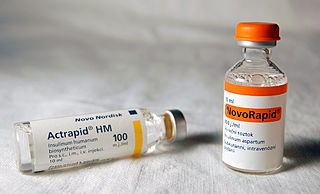Genetic Engineering with Paper Clips
Objective: Students will be able to describe how genetic engineers splice a gene from one organism into another organism's DNA.

Background:
Some people are unable to produce essential proteins. For example, diabetics cannot produce enough of the hormone, insulin, which is required for the uptake of glucose into the bloodstream. Years ago, insulin was obtained from the pancreas of pigs and cattles.
This method was not very efficient, in fact it took 2 tons of pig organs to produce 8 ounces of purified insulin. Because the insulin came from non-humans, sometimes humans would develop immune responses to the insulin produced by pigs. Genetic engineering now allows scientists to take the human gene that codes for insulin and insert it into a bacterial cell. These bacteria are grown in cultures and produce the insulin needed by humans. This method is less expensive and does not cause immune reactions in the human patient.
1. What are two disadvantages to using animal sources for insulin?
2. Why would engineered insulin NOT cause an immune reaction?
Procedure:
You will construct a double-stranded Human Growth Hormone (hGH) gene using colored paperclips. This gene is used to stimulate growth and can be created using genetic engineering the same way insulin is created.
Adenine (A) = black
Thymine (T) = yellow
Cytosine (C) = red
Guanine (G) = geen
Step1: Build Human hGH DNA
Link the appropriate clips togather to create 2 stands of hGH according to the following modified sequence. The actual gene consists of 573 bases. Remember, to follow the base-pair rule. Lay the final DNA model flat and tape the two sides together.
Label this DNA "human DNA" with masking tape and set aside for now.
A-A-G-C-T-T-A-T-G-G-T-C-C-C-G-G-A-C-G-A-A-G-C-T-T-C
Step 2: Build Plasmid DNA
A plasmid is a cricular piece of DNA that makes up part of the genetic material of a bacterium. Create a plasmid using paperclips with the following sequence. Use the same colors as above and follow the base pair rule to create a circular double-stranded model.
C-G-G-A-C-C-G-T-C-A-A-G-C-T-T-C-C
Label this DNA "Bacterial DNA" with masking tape.
Keep your bacterial plasmid and human DNA separate for now!
Step 3: Creating Sticky Ends
Both the hGH and the plasmid need for engineers to create "sticky ends," these are open complementary bases that will match and attach to each other. To do this, engineers cut the DNA with restriction enzymes. These enzymes only cut DNA in specific places, and there are many types of restriction enzymes, engineers must pick the one that is best for the job. In this case, the HindII restriction enzyme cuts the DNA as shown in the image below.

Find the sequence in the plasmid DNA that is like the sequence above and separate the plasmid (cut) so that you have sticky ends. Do the same for your human DNA so that it also has sticky ends.
The sticky ends from each type of DNA should match according to the base pair rule. SPLICE them together. You have now created a bacteria plasmid that contains the DNA for human growth hormone. This bacteria can be grown in a culture and will produce hGH for use in medicines.
Other Resources on Genetic Engineering
Genetic Engineering Concept Map
Slides and Notes on Genetic Engineering
Recombinant DNA Simulation - use paper and scissors to model DNA insertion of a target gene
Laboratory Analysis using Gel Electrophoresis